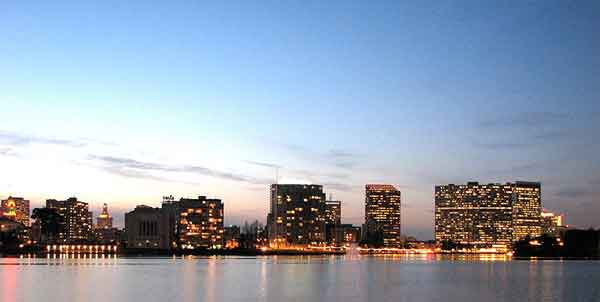
Research by a team at Arizona State University indicates that both season and geography are critical in determining the effectiveness of adaptive technologies like cool roofs. Credit: Ken Fagan, ASU.
Just when you thought cool roofs couldn’t get any cooler…
I reported recently on a Lawrence Berkeley Lab study that found white (or cool) roofs to be the most cost-effective option available.
Now, new information from researchers at Arizona State University (ASU) is uncovering just how effective urban adaptation technologies like these cool roofs—or their green (“vegetated”) counterparts—are at curbing climate change.
Their work reveals that US urban sprawl alone (i.e., none of the global warming caused by harmful greenhouse gases) increases surface temperatures by three degrees Celsius (or close to six degrees Fahrenheit). Urban adaptation technologies can, they say, counteract this climate change, though the degree (pun intended) varies depending on the season and geography.
In their paper titled “Urban adaptation can roll back warming of emerging megapolitan regions,” the ASU team, led by Matei Georgescu, pinpoints how technologies like cool roofs hold up to the various geographies and climates of the 50 states.
“This is the first time all of these approaches have been examined across various climates and geographies,” said Georgescu in an ASU press release. “We looked at each adaptation strategy and their impacts across all seasons, and we quantified consequences that extend to hydrology (rainfall), climate, and energy. We found geography matters.”
It certainly mattered in the south, where their simulations revealed an additional and adverse effect on Florida’s ecosystem.
According to Georgescu, “The deployment of cool roofs results in a 2 to 4 millimeter per day reduction in rainfall, a considerable amount (nearly 50 percent) that will have implications for water availability, reduced stream flow, and negative consequences for ecosystems. For Florida, cool roofs may not be the optimal way to battle the urban heat island because of these unintended consequences.”
More generally speaking, the ASU study found cool roofs to be of great benefit during summer, cooling buildings and lessening the demand for energy. In winter, however, those same roofs, particularly those in the north, were a little too effective—cooling buildings to the point where additional heating was necessary. Conversely, green roofs—more transpiring than reflective—don’t provide the level of cooling during the summer months, nor do they necessitate greater demand in winter.
Because of the differences in both demand and geography, researchers suggest that both the construction industry and consumers alike should be proactive in combatting continued climate change through “judicious planning and design choices.”
Feature image credit: xnatedawgx on Wikimedia Commons.

